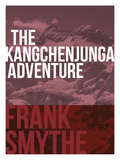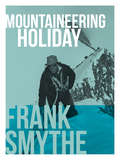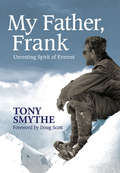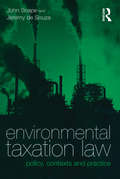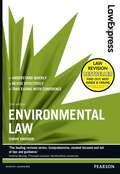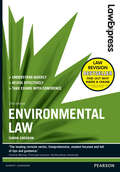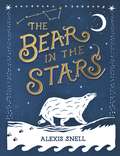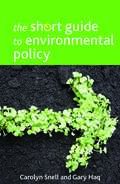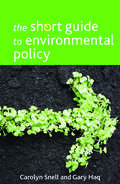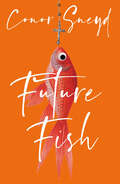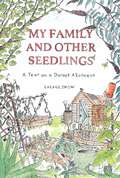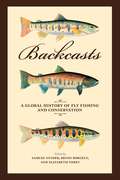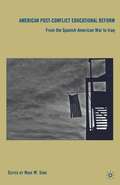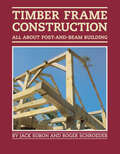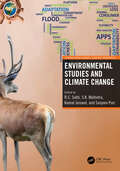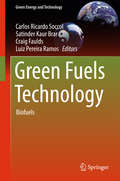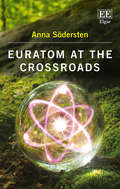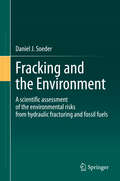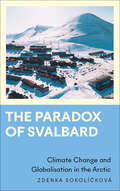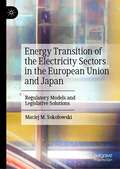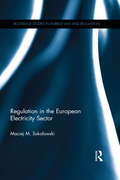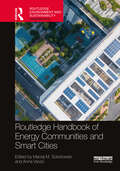- Table View
- List View
The Kangchenjunga Adventure: The 1930 Expedition to the Third Highest Mountain in the World
by Frank SmytheWe went to Kangchenjunga in response not to the dictates of science, but in obedience to that indefinable urge men call adventure.' In 1930, an expedition set out to climb the world's third-highest mountain, Kangchenjunga. As yet unclimbed, a number of attempts had been made on the peak, including two in the previous year. The Kangchenjunga Adventure records Frank Smythe's attempts as part of an international team to reach the summit, how a deadly avalanche, which killed one of the sherpas, brought an end to their climb and how they turned their attentions instead to Jonsong Peak, which offered a more appealing alternative to risky assaults on the greatest peaks. Smythe's books from this period give compelling reads for anyone with an interest in mountaineering: riveting adventures on the highest peaks in the world, keen observations of the mountain landscape and a fascinating window into early mountaineering, colonial attitudes and Himalayan exploration. Smythe was one of the leading mountaineers of the twentieth century, an outstanding climber who, in his short life - he died aged forty-nine -was at the centre of high-altitude mountaineering development in its early years. He climbed extensively in the Alps, gained the summit of Kamet (the highest peak then climbed) in 1931 and, on the 1933 Everest Expedition, reached a point higher than ever before achieved. Author of twenty-seven immensely popular books, he was an early example of the climber as celebrity.
Mountaineering Holiday: An Outstanding Alpine Climbing Season, 1939
by Frank SmytheThere is no holiday like a mountaineering holiday. For eleven months the mountaineer has sighed for the mountain wind on his cheek, for the lilt of the mountain stream, for the feel of rock in his hand, for the crunch of frozen snow beneath his feet, for the smell of mist and the fragrance of alp and pine forest. 'In his spare moments he has read about mountains, pored over maps, and studied guidebooks. Then comes the day when he inspects his boots, his ice axe, and his rope. He packs his rucksack. He buys his railway ticket. The incredible has become credible. For two weeks, three weeks, or a month he will escape from civilisation and all its works; he is off to the mountains.' In Mountaineering Holiday, Frank Smythe records 'an outstanding Alpine climbing season' - his 1939 summer holiday Writing in his typically engaging style of keen observation, entertaining anecdote and remarkable knack for description, Smythe takes the reader with him on his trip into the Alps. Arriving unfit and out of practice, he gets stuck behind slower climbers and spends rainy days confined to the valleys before making an impressive number of successful ascents and historic climbs: Mont Tondu, the Aiguille de Bionnassay, the Brenva Face - and an ascent of the Innominata Ridge of Mont Blanc. There is a wonderful sense of familiarity about the book. Smythes's experiences and emotions are instantly recognisable by the modern climber, evoking memories of other trips and mountain days. And his examination of our need for mountains and wild places reaches conclusions that strike a chord with everybody who enjoys the great outdoors. Yet this is the 1930s. Mountaineering equipment and technique are in their infancy. Attitudes within climbing are markedly different to those of today and the first ascents of many major routes are still to be claimed. Europe is on the brink of war and fearful of the future. The book's final climb is made with four young Germans - mere days before World War II …
My Father, Frank: Unresting Spirit of Everest
by Tony SmytheFrank Smythe's mountaineering achievements in the decade before the Second World War became a part of climbing history. His intensive Alpine climbing, followed by two Himalayan expeditions — to Kangchenjunga in 1930 and success the following year on Kamet, the highest summit then reached — became the prelude to Everest. And in 1933 on that great mountain, climbing alone and without supplementary oxygen he got to within 820 feet of the top, a record height before efforts were resumed post-war and Everest was climbed in 1953. And as a superb Himalayan finale, in 1937 he returned to the Indian Garhwal to climb difficult peaks up to 24,000 feet in a rapid lightweight style. The expeditions were central to his lifetime's work as a writer and photographer — 27 books and albums, together with numberless newspaper and magazine articles, intensive lecturing, radio broadcasts and a film. It was an output that made him a celebrity, a rare feat in the days before television and the internet. He had tens of thousands of readers and his name was familiar to perhaps millions of the general public. It was an incredible career, especially since he died at the early age of 48 after a serious illness in India. Frank Smythe was resolute in keeping his home life private, and few details of it emerged in his writings. It was a turbulent life, even from earliest childhood, and remained so, with ambition and impatience almost overwhelming him at times, and eventually this volatile mix, apart from alienating some more traditional members of the Alpine Club, would lead to the break-up of his marriage. Yet when he was among hills he became tranquil and inspired. Some fifty years after his death in 1949 one of his three sons, Tony, decided to write a full account of his father's life, an extraordinary story he believed was important historically and well worth telling. This book is the result. 'This book is timely, well researched and written with the authority of a committed climber. The reader will be watching to see just how objective Frank's son will be and I can only compliment Tony Smythe on dealing with all the major events in his father's life in the most even-handed way. I found the quarrel between Smythe and Graham Brown one of the most interesting sections of the book for Tony's description of the climbing is riveting and his analysis of the disagreements masterful. The reader is left gripped … The book does not lack humour either, and I found myself smiling, sometimes laughing out loud.' Doug Scott 'Frank could obviously be an awkward bloke, but I'm growing fond of him! Hugely impressed, a huge piece of work and very well written.' Steve Dean 'Just received the second part of your magnificent book — it makes fine reading … All those years of incredible research with interesting findings have paid off … I was amazed about the number of accidents and illnesses he suffered in his short life.' Richard Smythe (brother)
Environmental Taxation Law: Policy, Contexts and Practice
by John Snape Jeremy de SouzaThe theoretical arguments for environmental taxes and other types of economic instruments for environmental protection have been discussed extensively in the literature. Rather less well discussed has been the extremely complex form that such instruments have in fact taken in practice. Environmental Taxation Law: Policy, Contexts and Practice examines the legal implications of introducing environmental taxes and other economic instruments into the regulatory framework of UK law. In doing so, it analyzes and explains the difficulties of grafting environmental taxes onto the complexities of existing regulatory structures, not all of which, of course, were originally devised with environmental considerations in mind. Although the focus of the book is the UK's pioneering implementation of a web of distinct yet interrelated policy measures, it locates the UK's taxes and instruments not simply in their broader context of market and environmental regulation, but also in the contexts of European and international law.
Environmental Taxation Law: Policy, Contexts and Practice
by John Snape Jeremy de SouzaThe theoretical arguments for environmental taxes and other types of economic instruments for environmental protection have been discussed extensively in the literature. Rather less well discussed has been the extremely complex form that such instruments have in fact taken in practice. Environmental Taxation Law: Policy, Contexts and Practice examines the legal implications of introducing environmental taxes and other economic instruments into the regulatory framework of UK law. In doing so, it analyzes and explains the difficulties of grafting environmental taxes onto the complexities of existing regulatory structures, not all of which, of course, were originally devised with environmental considerations in mind. Although the focus of the book is the UK's pioneering implementation of a web of distinct yet interrelated policy measures, it locates the UK's taxes and instruments not simply in their broader context of market and environmental regulation, but also in the contexts of European and international law.
Environmental Law (PDF)
by Simon SneddonThe Law Express series is designed to help you revise effectively. This book is your guide to understanding essential concepts, remembering and applying key legislation and making your answers stand out
Law Express: Environmental Law (Law Express)
by Simon SneddonThe Law Express series is designed to help you revise effectively. This book is your guide to understanding essential concepts, remembering and applying key legislation and making your answers stand out!
The Bear in the Stars
by Alexis SnellThere was once a bear, a great, white bear - Queen of Beasts. Her kingdom was a beautiful, cold, glistening place. But over the years the ice disappeared, slipping away like sand through an hourglass. Slowly, slowly, one by one, the other animals moved on.The Great Bear has no choice but to leave her snowy realm to search for food, friends and a new home. She soon discovers a world that is growing hotter whilst hearts grow colder - until one small act of kindness changes everything. The Bear in the Stars is a story about loss, kindness and new beginnings.A striking modern fable and an original and uplifting response to the issue of climate change. A beautiful and inspirational gift for readers of all ages.
The short guide to environmental policy (Short Guides (PDF))
by Carolyn Snell Gary HaqSome have argued that the rate and scale of human-induced global environmental change is so significant that it now constitutes a new geological epoch in the Earth’s history called the Anthropocene (Zalasiewicz et al, 2011; Steffen et al, 2011). More than ever, there is a need to have appropriate and effective environmental policies that address the challenges of climate change, biodiversity, food, water and energy insecurity, environmental pollution, poverty alleviation and environmental equity. The short guide to environmental policy provides a concise introduction to post-war environmental policies, bringing together perspectives from a range of fields including economics, sociology, politics and social policy. It covers a broad range of issues, including causes and effects of contemporary environmental issues, policy approaches to addressing environmental problems, challenges to implementing environmental policies and future environmental challenges. This book is an essential introduction to all those interested in how policies can address environmental problems.
The short guide to environmental policy (Short Guides (PDF))
by Carolyn Snell Gary HaqSome have argued that the rate and scale of human-induced global environmental change is so significant that it now constitutes a new geological epoch in the Earth’s history called the Anthropocene (Zalasiewicz et al, 2011; Steffen et al, 2011). More than ever, there is a need to have appropriate and effective environmental policies that address the challenges of climate change, biodiversity, food, water and energy insecurity, environmental pollution, poverty alleviation and environmental equity. The short guide to environmental policy provides a concise introduction to post-war environmental policies, bringing together perspectives from a range of fields including economics, sociology, politics and social policy. It covers a broad range of issues, including causes and effects of contemporary environmental issues, policy approaches to addressing environmental problems, challenges to implementing environmental policies and future environmental challenges. This book is an essential introduction to all those interested in how policies can address environmental problems.
Future Fish
by Conor Sneyd‘Fast, funny and freaky’Luke HealySacked from his first job in Dublin, Mark McGuire arrives in the dismal town of Ashcross to take up a new role as customer service assistant for Ireland’s second-biggest pet food brand, WellCat. From his initial impressions, it’s a toss-up whether he’ll die of misery or boredom.He couldn’t be more wrong. For starters, the improbably cute receptionist, Kevin, seems willing to audition as the man of Mark’s dreams. There’s also the launch of a hush-hush new product, Future Fish, on the horizon. Not to mention the ragtag band of exorcists, alien-hunters and animal rights warriors who are all convinced WellCat is up to no good. Why are these crackpots so keen on getting close to Mark? And will their schemes ruin his career prospects In a deliciously daft comic caper, Conor Sneyd perfectly captures the powerlessness of low-rung office life as well as the seductive zealotry of our times.
My Family and Other Seedlings: A Year on a Dorset Allotment
by Lalage SnowA few years ago Lally Snow moved to a Dorset village with her husband and three small children, having spent over a decade as a war photographer, foreign correspondent and film maker living in Kabul. She covered the conflict there as well as other wars from Gaza to Eastern Ukraine, and Iraq.In the late winter of 2021-22, Lally decided to rent an allotment, despite having only a rudimentary knowledge of gardening. She was starting from scratch and setting herself the dual challenge of growing an allotment at the same time as growing a family.This is a heart-warming, wry and at times tearful account of Lally's travails as a mother and novice allotment holder, counterpointing horticultural progress with the perils of parenting. Along the way she reflects on the drudgery of English rural domesticity after a professional life chasing war and adventure, the history of the allotment since Saxon times, and the wonderful moment when gardening becomes fun rather than just feeding a family.
Backcasts: A Global History of Fly Fishing and Conservation
by Samuel Snyder Bryon Borgelt Elizabeth Tobey James Prosek Chris Wood Jen Corrinne Brown“Many of us probably would be better fishermen if we did not spend so much time watching and waiting for the world to become perfect.”-Norman Maclean Though Maclean writes of an age-old focus of all anglers—the day’s catch—he may as well be speaking to another, deeper accomplishment of the best fishermen and fisherwomen: the preservation of natural resources. Backcasts celebrates this centuries-old confluence of fly fishing and conservation. However religious, however patiently spiritual the tying and casting of the fly may be, no angler wishes to wade into rivers of industrial runoff or cast into waters devoid of fish or full of invasive species like the Asian carp. So it comes as no surprise that those who fish have long played an active, foundational role in the preservation, management, and restoration of the world’s coldwater fisheries. With sections covering the history of fly fishing; the sport’s global evolution, from the rivers of South Africa to Japan; the journeys of both native and nonnative trout; and the work of conservation organizations such as the Federation of Fly Fishers and Trout Unlimited, Backcasts casts wide. Highlighting the historical significance of outdoor recreation and sports to conservation in a collection important for fly anglers and scholars of fisheries ecology, conservation history, and environmental ethics, Backcasts explores both the problems anglers and their organizations face and how they might serve as models of conservation—in the individual trout streams, watersheds, and landscapes through which these waters flow.
American Post-Conflict Educational Reform: From the Spanish-American War to Iraq
by N. SobeThis edited volume brings together historians of education and comparative education researchers to study the educational reconstruction projects that Americans have launched in post-conflict settings across the globe.
Timber Frame Construction: All About Post-and-Beam Building
by Jack A. Sobon Roger SchroederDiscover the satisfaction of making your own durable, economical, and environmentally friendly timber frame structures. Covering all aspects of timber frame construction, this practical guide is filled with easy-to-understand instructions, clear illustrations, and helpful photographs. With expert advice on selecting appropriate timber, necessary tools, safety considerations, joinery techniques, assembly, and raising, Jack Sobon and Roger Schroeder encourage beginners by offering complete plans for a small toolshed. Turn your dream of a timber frame house into a reality.
Environmental Studies and Climate Change (Translating Animal Science Research)
by R. C. Sobti S. K. Malhotra Kamal Jaiswal Sanjeev PuriCurrently, anthropogenic activities have caused unprecedented destruction of the environment at alarming rates, leading to undesirable alterations in air, land, and water. The process of environment degradation has been accelerated by industrial processes, which result in waste as well as over-consumption of natural resources. The ecological balance has been disturbed, and resources have shrunk. All this has resulted in climate change, which has emerged as a major concern in the 21st century. Changes in the environment are driven by demand for energy, water, and food to raise the standard of living. These are also responsible for climate change, with contributions from deforestation and CO2 emissions from fossil fuels such as coal and petroleum. The present volume discusses some of the main issues regarding environmental degradation and the causes as well as the impact of climate change, which is impacting the ecosystem. The effects of various pollutants, causes of climate change with case studies on geochemistry and glaciers, etc., and measures to reduce the impact on biodiversity, health, etc. are discussed in detail in its chapters. In a nutshell, this volume discusses in detail the following issues: • Anthropogenic and natural factors in environmental degradation • Climate change history, causes, and threats to abiotic and biotic systems • Case studies on the impact of climate change and living systems • Mitigation and preparedness for the future
Environmental Studies and Climate Change (Translating Animal Science Research)
by R. C. Sobti Sandeep K. Malhotra Kamal Jaiswal Sanjeev PuriCurrently, anthropogenic activities have caused unprecedented destruction of the environment at alarming rates, leading to undesirable alterations in air, land, and water. The process of environment degradation has been accelerated by industrial processes, which result in waste as well as over-consumption of natural resources. The ecological balance has been disturbed, and resources have shrunk. All this has resulted in climate change, which has emerged as a major concern in the 21st century. Changes in the environment are driven by demand for energy, water, and food to raise the standard of living. These are also responsible for climate change, with contributions from deforestation and CO2 emissions from fossil fuels such as coal and petroleum. The present volume discusses some of the main issues regarding environmental degradation and the causes as well as the impact of climate change, which is impacting the ecosystem. The effects of various pollutants, causes of climate change with case studies on geochemistry and glaciers, etc., and measures to reduce the impact on biodiversity, health, etc. are discussed in detail in its chapters. In a nutshell, this volume discusses in detail the following issues: • Anthropogenic and natural factors in environmental degradation • Climate change history, causes, and threats to abiotic and biotic systems • Case studies on the impact of climate change and living systems • Mitigation and preparedness for the future
Green Fuels Technology: Biofuels (Green Energy and Technology)
by Carlos Ricardo Soccol Satinder Kaur Brar Craig Faulds Luiz Pereira RamosThis book presents key recent developments in biofuel policy, products, processes, patents and innovative technologies. It presents several case studies, which maximize reader insights into how innovative green energy technologies can be implemented on an industrial scale, with illustrations, photos and new approaches. It also analyzes in detail several different technological aspects of the research into and production of green fuels from the first, second and third generation, such as, bioethanol, biogas, biohydrogen, biobutanol, biofuels from pyrolysis, and discusses their economic and environmental impacts. A new source of information for engineers, technicians and students involved in production and research in the biofuels sector, this book also provides a valuable resource for industry, covering the current and future status of biofuels.
Euratom at the Crossroads
by Anna SöderstenAddressing the contentious debate surrounding the future of the European Atomic Energy Community Treaty (Euratom), Anna Södersten offers one of the first examinations of Euratom from an institutional and structural perspective, and in doing so, investigates the legal implications of its continued separate existence. Using primary material as key sources for analysis, as well as examining all of the treaty’s titles, this book explores the relationship between Euratom and two other core EU treaties, the Treaty on European Union (TEU) and the Treaty on the Functioning of the European Union (TFEU). In considering whether it is still relevant that one of the EU’s founding treaties is the promotion of nuclear energy, Södersten concludes that there is no need for the Euratom as a separate treaty. Euratom at the Crossroads will be essential reading for scholars in the fields of EU institutional law and EU energy law. EU officials and practitioners in the field of energy law, at national legislatures and regulator authorities, will find this indispensable reading.
Fracking and the Environment: A scientific assessment of the environmental risks from hydraulic fracturing and fossil fuels
by Daniel J. SoederThis book provides a systematic scientific approach to the understanding of hydraulic fracturing (fracking) as a hydrocarbon extraction technology and its impact on the environment. The book addresses research from the past decade to assess how fracking can affect air, water, landscapes and ecosystems, and presents the subject in the context of the history of fracking and shale gas development in the United States, describing what is known and not known about environmental impacts, and the broader implications of fossil energy use, climate change, and technology development. In 9 chapters, the author lays out how and why hydraulic fracturing was developed, what driving forces existed at the beginning of the so-called "shale revolution", how success was achieved, and when and why public acceptance of the technology changed. The intended audience is scientific people who are concerned about fracking, but perhaps do not know all that much about it. It is also intended for lay people who would be interested in understanding the technical details of the process and what effects it might or might not be having on the environment. The book is written at a level that is both understandable and technically correct. A further goal is to give some useful insights even to experienced petroleum geologists and engineers who have been doing fracking for many years.
The Paradox of Svalbard: Climate Change and Globalisation in the Arctic (Anthropology, Culture and Society)
by Zdenka Sokolíčková‘Engaging, rich and nuanced, this book exposes the deep dilemmas facing this Arctic archipelago. A must for anyone with an interest in the challenges of a melting world. Ethnography at its best’ Marianne E. Lien, Professor, University of Oslo‘Rich and deeply textured ... Zdenka Sokolíčková demonstrates how the logic of extraction intersects awkwardly with community, environment, geopolitics and sustainability’ Klaus Dodds, Professor, Royal Holloway University of London‘Lucidly captures the dilemmas of maintaining community in the world’s northernmost settlement, where climate change is particularly evident. Highly recommended!’ Cecilie Vindal Ødegaard, Professor, University of BergenLongyearbyen in the Arctic is the world’s northernmost settlement. Here, climate change is happening fast. It is clearly sensed by the locals; with higher temperatures, more rain and permafrost thaw. At the same time, the town is shifting from state-controlled coal production to tourism, research and development. It is rapidly globalising, with numerous languages spoken, and with cruise ships sounding their horns in the harbour while planes land and take off.A small town of 2,400 inhabitants on the Norwegian archipelago of Svalbard, Longyearbyen provides a unique view into the unmistakable relationship between global capitalism and climate change. The Paradox of Svalbard looks at local and global trends to access a deep understanding of the effects of tourism, immigration and labour on the trajectory of the climate crisis, and what can be done to reverse it.Zdenka Sokolíčková is a researcher at the University of Hradec Králové, Czechia, and the University of Groningen in the Netherlands. Her research in Longyearbyen was hosted by the Department of Social Anthropology at the University of Oslo, Norway.
Energy Transition of the Electricity Sectors in the European Union and Japan: Regulatory Models and Legislative Solutions
by Maciej M. SokołowskiThis book provides a comprehensive overview of the energy policies in the European Union and Japan in terms of electricity markets and climate action, including energy efficiency, renewable energy sources, and the reduction of emissions. The book evaluates and compares the regulatory frameworks for achieving energy transitions by answering a number of questions focused on the essence and range of the regulatory models used by leading global economies which herald carbon neutrality by 2050. The book provides a useful framework that systematises Japanese and European energy policies and legislation including electricity-related policies, plans, and programmes. Discussing these issues in relation to the European and Japanese 2050 energy transition the author delves into the four pillars of the transition: market reform, reduction of emissions, promotion of renewables, and enhancing energy efficiency. Each chapter demonstrates the timing of the actions undertaken both in Europe and Japan; analyses the character of the conducted actions, evaluates the stakeholders of the realised agenda; and presents the technologies involved in the energy transition.
Regulation in the European Electricity Sector (Routledge Research in Energy Law and Regulation)
by Maciej M SokołowskiSince the very beginning of European integration, electricity has been within the legal sphere of the EU. Much of this is found within the binding European acts making up the framework of the Energy Packages. The established legal institutions have had a significant impact on the shape of the energy market in Europe. Nevertheless, the European energy market still seems to be developing, as demonstrated by the current lively discussion about the state of the Energy Union. Regulation in the European Electricity Sector delves into European energy law and reflects on some of the primary issues related to the public legal impact on the European energy sector. The book offers a brief explanation of the background operation of the electricity sector, as well as liberalisation within the area, and traces the evolution of the EU’s approach towards the issue of public law regulation within the electricity sector. Finally, the book presents an analysis of European and national laws, considering their interpretation, and explores the future of public law regulation. Aimed at giving the reader a deep insight into a nature of the state’s presence in the power sector, this book will be of great interest to students and scholars of EU energy law and policy.
Regulation in the European Electricity Sector (Routledge Research in Energy Law and Regulation)
by Maciej M SokołowskiSince the very beginning of European integration, electricity has been within the legal sphere of the EU. Much of this is found within the binding European acts making up the framework of the Energy Packages. The established legal institutions have had a significant impact on the shape of the energy market in Europe. Nevertheless, the European energy market still seems to be developing, as demonstrated by the current lively discussion about the state of the Energy Union. Regulation in the European Electricity Sector delves into European energy law and reflects on some of the primary issues related to the public legal impact on the European energy sector. The book offers a brief explanation of the background operation of the electricity sector, as well as liberalisation within the area, and traces the evolution of the EU’s approach towards the issue of public law regulation within the electricity sector. Finally, the book presents an analysis of European and national laws, considering their interpretation, and explores the future of public law regulation. Aimed at giving the reader a deep insight into a nature of the state’s presence in the power sector, this book will be of great interest to students and scholars of EU energy law and policy.
Routledge Handbook of Energy Communities and Smart Cities (Routledge Environment and Sustainability Handbooks)
by Maciej M. Sokołowski Anna VisviziThis Handbook examines the regulatory, social, financial, and technological issues pertaining to energy communities in smart cities. Evidencing the emergence of new imperatives at the intersection of sustainability, resilience, innovation, and legal issues, energy communities embody the thrust of the user-centred digital transformation our societies are subjected to today. By bridging the energy communities debate with smart cities research, this Handbook positions itself at the heart of the conversation on energy sustainability, climate action, and “just transition”. Drawing on contributions from across the globe, this book offers both a birds-eye and a detailed inter- and multidisciplinary insight into the emergence of energy communities and their evolution in the smart city context. Technological and regulatory aspects of this transition are explored from a variety of conceptual and empirical perspectives. Case studies evidencing developments in the Global South and the Global North embellish the conversation. Questions of climate change, energy efficiency, renewable energy sources, emissions’ reduction, and corresponding policy frameworks are discussed. Dedicated to all those interested in climate action, energy transition, sustainable development, and smart cities, this Handbook will be of interest to policymakers, lawyers, energy and urban experts, researchers, and students.
